Cover Photo: Senator Salazar, Women of Distinction Luncheon
By Christine Stoddard | cstoddard@queensledger.com
The following photo, featuring New York State Senator Julia Salazar, appeared on the cover of the March 7, 2024 print edition:
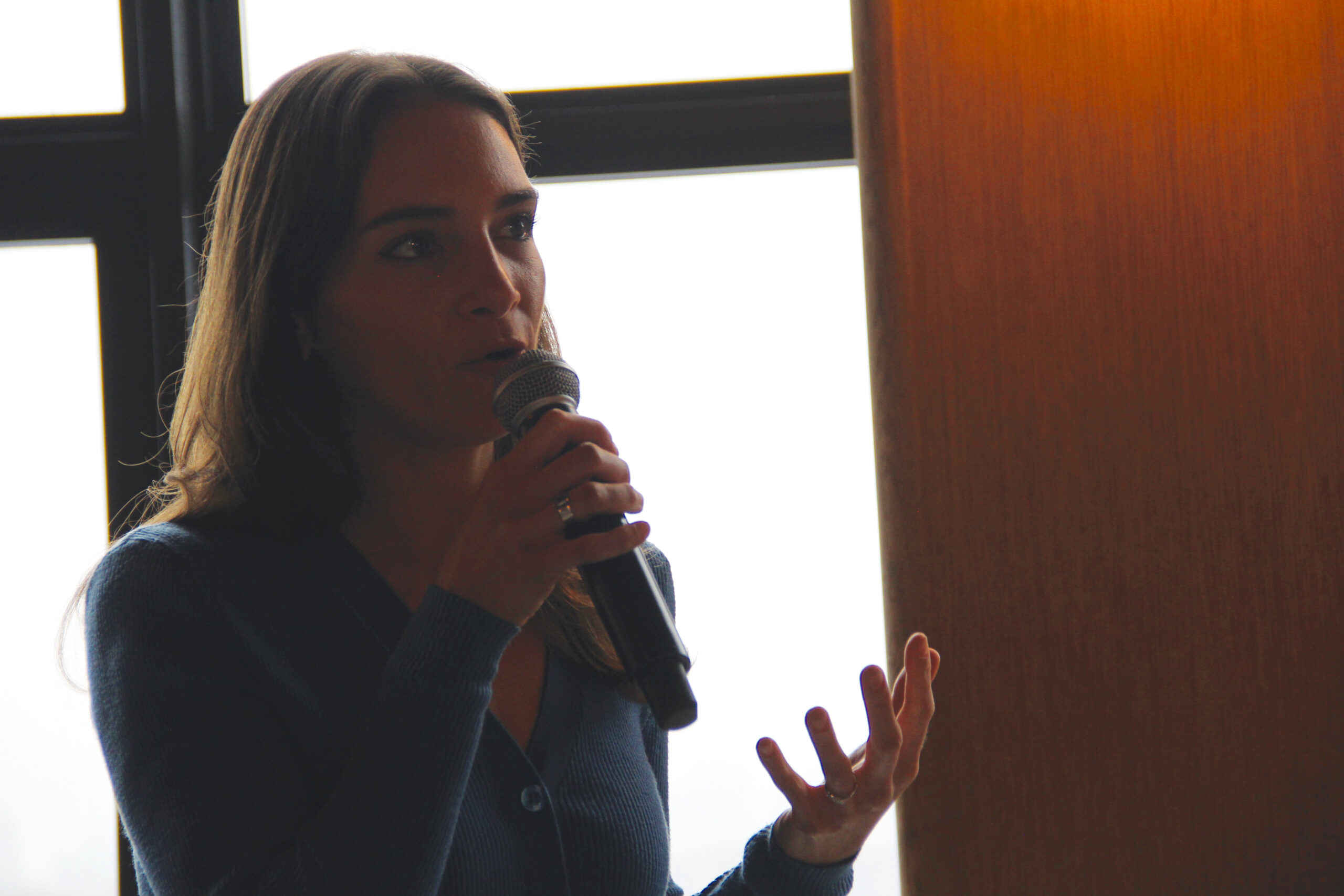
By Christine Stoddard | cstoddard@queensledger.com
The following photo, featuring New York State Senator Julia Salazar, appeared on the cover of the March 7, 2024 print edition:

By Yasin Akdag | news@queensledger.com
According to the World Population Review, New York City is home to the second-largest number of Turkish residents in the United States, amounting to 33,686 individuals or 0.17% of the state’s population. (Who beats us? New Jersey.) In South Brooklyn, you will see neighborhoods with tight-knit Turkish communities. This is especially true for Sheepshead Bay, which is packed with tempting Turkish bakeries and restaurants that will entice you to visit.
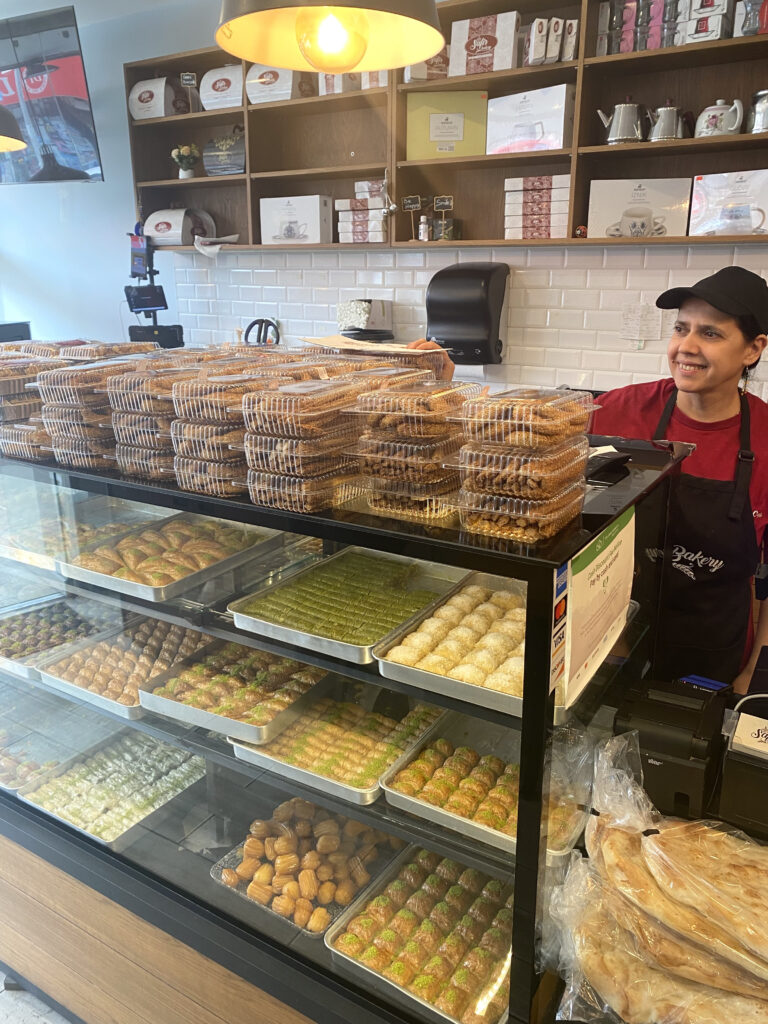
The major migration waves of Turks to America began in 1820 and lasted up until through 1970’s, with migration still happening today. Modern Turks are known to be influenced by Western culture, with economic and educational opportunities motivating them to emigrate to the United States.
Here are just two Turkish restaurants of note:
Safir Bakery & Cafe

Photo by Yasin Akdag.
Safir Bakery & Cafe, located on Kings Highway, is the perfect place to sample Turkish cuisine. Hatice Sirin, who is the manager of Safir Bakery & Cafe, welcomes you to try their Turkish delicacies. “American people like our breakfast items and also the dessert is more than 15 or 20 kinds of baklava pistachio, walnut, and hazelnut kinds,” she says. Turkish baklava goes perfectly together with a cup of Turkish tea. Feel like a king or queen while devouring an Ottoman-themed royal breakfast.
New York City’s Turkish community is growing and continues to grow, especially on and around Kings Highway. Hatice is the perfect example of a Turkish migrant who came to the area, intending to contribute to society, and started working at the bakery when it first opened 6 years ago. Having arrived here 17 years ago, she believes that in the Turkish community of Brooklyn, everyone is looking out for each other: “Yes, everybody likes each other, everybody helps each other…Our neighborhood is very quiet and clean and safe. [There are] many Turkish restaurants, Turkish markets, Turkish cafeterias–like us,’’ she says.
One regular Safir customer, Eyip Cowen, often visits accompanied by his cute puppy named Harley. Cowen, who was born in Mersin, Turkey and grew up in London, has been in New York for 40 years and found success by importing women’s shoes from abroad. He travels back and forth every day to his Manhattan office, on Fifth Avenue. He makes sure to stop by Safir Bakery & Cafe for the freshly made food and hospitable staff.
Cowen argues that Turks flock to South Brooklyn because family leads them there: “People grow their community, the community grows. It grows by family. If you have family here, then you come to join the family and it grows. If you don’t have family, you’re not gonna come. That’s what draws you here. Not just being Turkish, but if you have a family.”
Beyti Turkish Kebab
If we head farther south to Brighton Beach, the atmosphere changes noticeably. This area is known as Little Odessa for its noticeable Russian population, but Turkish restaurants and shops are also prevalent. The beach and lively shops and restaurants make for an attractive summer destination.
Here you will meet Sadik Cicek, who brought his cooking culture with him from Hatay, Turkey and owns the restaurant Beyti Turkish Kebab. Sadık used to work for a family in Saudi Arabia as a cook for 10 years, from 1991-2001, and then his partner moved to New York City to study for 4 years and brought Cicek with him. Upon completion of his Master’s, his partner returned to his country, while Cicek chose to stay here. He has been in the States since 1997 because he saw opportunities and wanted to achieve his American dream.
By 2010, Cicek saved up enough money to open up his own restaurant, and then he brought his family here in 2011. Cooking has been a tradition in his family for generations and customers love his authentic Turkish touch.
“What I learn from my city, I make here the same way,” he says. “I didn’t change it. That’s why my customers like my food.”
In 2023, Turkey was the victim of a major earthquake, where more than 50,000 people lost their lives. The ground swallowed entire cities across southeast Turkey, affecting 11 Turkish provinces.
Unfortunately, Cicek’s city, Hatay was among the provinces that took a hard hit.
“After 2023, my city had an earthquake and many people died,” Cicek says. “I lost 45 people I knew, mostly my friends.”
Turkish politics have also driven more Turks to leave the country. Some choose South Brooklyn as their new home. The aforementioned are only two of the many Turkish businesses that make up the Turkish community in South Brooklyn. Come visit and explore more.

Photo by Yasin Akdag.
By Meagan J. Meehan | news@queensledger.com
Sculptor Discusses the Nature of Art and Design
Cec LePage was born in Canada and since the early 1980s, New York City has been her home. In her Bushwick studio she creates artwork that is both decorative and functional. Decorative vases and candle holders rendered in vibrantly-colored Lucite are Cec’s unique and signature approach to the material, yet she also creates sculptural artworks for gallery exhibitions and charity events such as Postcards from the Edge, which is hosted annually by the Visual AIDS charitable organization. Cec has always been driven to express herself visually and gleams inspiration from life. Feelings and emotions—both pleasurable and devastating—inspire her to create mixed-media work which seamlessly combines detailed painting with sculptural elements.
Cec recently discussed her work and career via an exclusive interview.
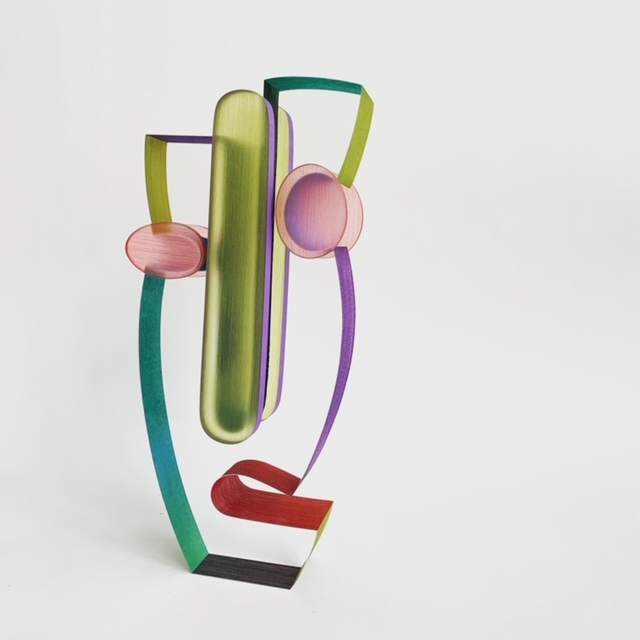
Meagan Meehan (MM): How did you initially get interested in art and which artists are your biggest influences?
Cec LePage (CL): My creative juices started at a very young age. I don’t recall a moment when I wasn’t busy entertaining myself with art supplies or making do with what was in front of me.
One time in particular held significance and resulted as the catalyst to my path. My father turned up one day with a 4×8 foot slate blackboard he acquired from a school renovation and he made it clear that I was to draw on this surface only and not the walls. I was so overcome with joy that the walls of which he spoke were immediately forgotten. I think I was 3 1/2 years old. Artists that have made an impact on me are wide ranging from The Surrealist to Early Christian encaustic portraits done by Anonymous. Too many artists move me to name one in particular. I love art that gives me breath, a painting or sculpture film or dance that pulls me in has an exit for the takeaway.
MM: You moved to New York in the 1980s…how was the art scene back then different from the scene today?
CL: New York in the eighties served up an ocean of opportunities, collaborations. The nightlife was extreme and obscure in the offerings from the creative approach mailed invitations and themes, a lot of themes and it was an affordable decade somehow, we could do it all. Places like Canal Street were chock filled with unusual stores which sparked fashion trends to countless options of material to build with. Canal Street Surplus launched a plethora of possibilities let alone countless carriers. It was definitely a favorite as on could find anything there in limited amounts and the unique stock was constantly changing. And of course, Canal Street Plastic was my favorite where I had the run of the place, an open credit line and was allowed to use their equipment, which would be unheard of today. It was a time where on a dreary summer night the rain blended with the soothing sound of Saxophone being played from an open window, echoing through the cobblestone streets of SOHO. It was an intense time it was a time of love and melancholy it was a time of great creativity and a time of great loss. AIDS hit the likes of a squall at sea, drowning so many beautiful creative people and scaring our lives. It changed all of us, AIDS changed NYC.
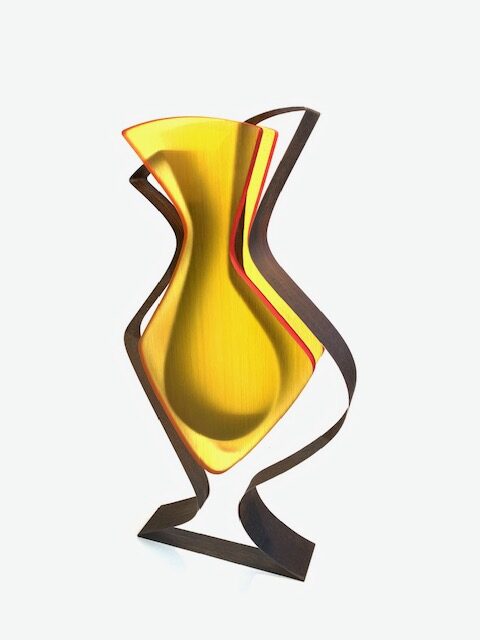
MM: Your studio is in Brooklyn, so how does the borough influence your creativity?
CL: Always being a Manhattan Island girl where art studios became smaller and unaffordable, I found myself in beautiful industrial Bushwick with a view of the Newtown Creek and its constant avian flight, from sea gulls to geese to ducks even the occasional Egret is spotted perching on an old boat bumper. I am happy to report that I really love it here. People take a moment to talk to one another, they are genuinely interested and interesting. I love running into a random pop-up gallery and invited to enter even though it’s not yet open to the public. I love hearing bands rehearsing in a distant warehouse, some of which are extremely impressive. I love hearing a live soulful voice booming vocals from a studio that has me shaking a leg at 10:00 am and moves the elderly man walking behind me to join in, both of us snapping fingers to the beat.
These random moments take me back and fill my heart with joy.
MM: You are a designer of vases and candleholders and more. So, how did you get into design and how closely do you feel art and design are linked?
CL: I don’t think there’s a separation between art and design as the two live side by side simultaneously living in each other’s spheres. Whether sketching out ideas for a painting or sculpture, one is designing the projected possibility of what is to be created. As the old adage goes “What came first the chicken or the egg?” Designing began at the age of 14-15 years old creating cloisonné enamel jewelry starting what one could call commerce. It carried itself to acrylic jewelry the rest is history.
MM: Be honest, out of all of your creations, do you have any particular favorite piece? If so, which one and why?
CL: Insofar as my favorite piece… the last one I made is my favorite.
MM: What would you say has been the highlight of your artistic career so far?
CL: One of my big accomplishments is to have always lived on what I love to do. Having a gallery for twenty-five years, using the space as both a lab and social platform. Making a living in the arts can be a rocky road at times but that’s all part of it. The biggest accomplishment is yet to come.
To learn more about artist Cec LePage, follow her via @lepagenewyork and visit her official website: www.lepageny.com
 meagan
meagan
By Aaron Gold | news@queensledger.com

Photo of the reviewer in front of the escape room
The atmosphere changes when you walk down the stairs to MyssTic Rooms, an escape room in Park Slope. The style is almost Sherlock Holmesian with a big leather couch and a chest you lock your valuables into. I’ve done quite a few escape rooms in my time, as well as worked for a couple of them. Aesthetics are crucial. You want to set the right mood for your customers, intriguing them to a mystery while looking professional and assuaging any idea that they’re about to be underwhelmed. Mystic Rooms on 794 Union St. accomplishes that with flying colors.
We took on the Montauk Project room, which was like embarking on our very own Stranger Things. The puzzles were challenging and clever, without ever taking gigantic logic leaps; everything flowed well. Solving puzzles to earn the next clue was a blast, and the game really rewarded you for paying attention. Teamwork was crucial for escaping on time, but no one felt their role was boring.
Everything felt creepy without being scary, so your younger ones will have a good time as well. With some word-based clues, it may be tricky for non-fluent English speakers, but as long as you have at least one person on your team who is fluent, everything should be manageable.
There’s a lot to harken back to what it was like to be a kid in the 80’s/90’s, including cassette tapes, board games, and an aesthetic that can only be described as of the time. I loved how varied the challenges of the puzzles were. Without giving anything away, we were challenged sonically, visually, and outside-of-the-box thinking was absolutely necessary.
Our cluemaster, Laura, was happy to accommodate our desire to only be clued when we ask for it, and she provided a very fun atmosphere, entrenching us in the lore without bogging us down with 10,000 things to remember.
One thing that set Montauk Project apart from many other escape rooms was that the smells changed depending on circumstances. It was a subtle yet palpable touch to creating the atmosphere that we all appreciated. If you’re looking for a challenge that will push without overwhelming you, I cannot recommend MyssTic Rooms enough.
By Christine Stoddard | cstoddard@queensledger.com
The journey of a first feature in ultra-low-budget land
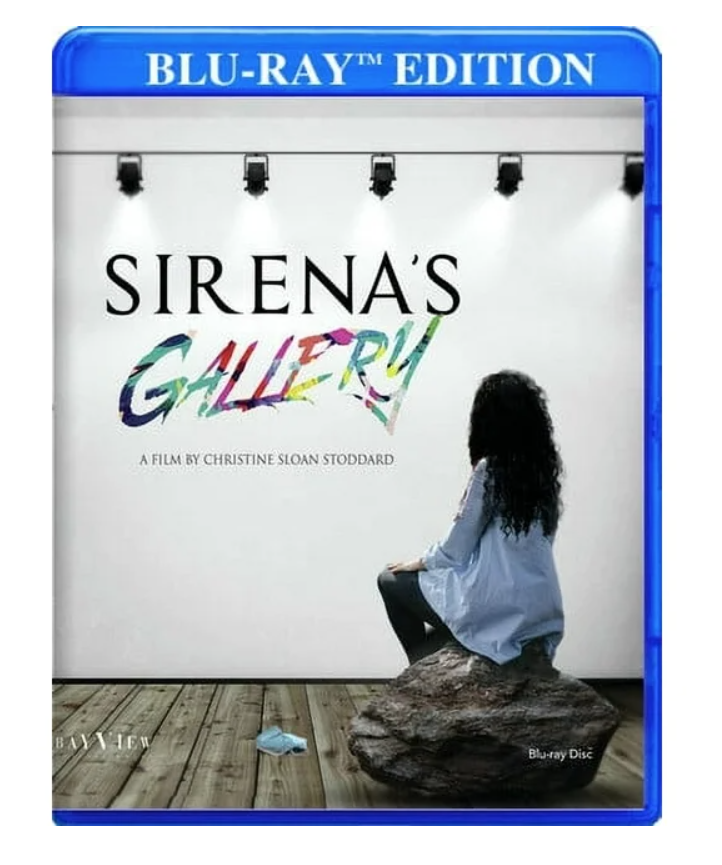
As my boyfriend once teased me, most people spent quarantine making bread; I made a movie. He isn’t wrong, though it is what a cinephile like me would call a modest attempt. My first feature, an ultra-low-budget indie called Sirena’s Gallery, was born during the pandemic. It went from grad school musing to artist residency proposal to fever dream solo production. At some point, I went from rotting in my bed, fretfully watching live footage of an empty Times Square, to deciding I wasn’t going to give up on my dreams. Now Sirena’s Gallery is streaming on Tubi, Amazon, Hoopla, and other platforms, with more soon joining the mix. You can buy it on Blu-Ray–and from Wal-Mart of all places.
A Quarantine Proposal
Sirena’s Gallery tells the story of a recently widowed gallery owner. In her journey of grief, she finds her way back to art-making. I can distinctly remember writing the logline in a Google Form for 1708 Gallery’s open call. (Every writer is familiar with a blinking cursor.)
From the depths of my Ocean Hill bedroom, I thought back to the kudzu-tangled South of my early adulthood. The gallery, located in my college town of Richmond, Virginia, is a contemporary non-profit art space dating back to 1978. Though my sister interned there after graduating from Virginia Commonwealth University, I had no connection to the venue. I only knew it as a local institution that brought national artists to Richmond and nurtured local talent by participating in the First Fridays Art Walk. I was one of many who popped into the gallery on the first Friday of the month to check out what was on the walls…or floor or maybe ceiling.
It was not long before the gallery notified me that I had won. After losing studio spaces in Bay Ridge and Bed-Stuy, I was desperate to have a place to work. If that meant returning to Virginia for two weeks, I would find the safest way to do it.
Though my residency took place in May 2020, when so much about the virus was still unknown, I vowed to return to Brooklyn. I had no interest in joining the flocks abandoning New York City for the next 1-2 years–or forever. In under two days, the person I was quarantining with joined me at the gallery to film what I could not do alone. I spent the remaining 12 days by myself. I filmed in the gallery, outside in post-industrial splendor, and then back in the gallery but on Zoom, GoogleMeet, FaceTime, and Photo Booth.
When I returned to Brooklyn, I packed my bags and boxes for my new apartment in Flatbush. Ten months would pass before I touched my Sirena’s Gallery footage again. Certainly part of the procrastination came from the general malaise all of us faced then. Most movie theaters still did not have regular hours again. Others had permanently closed. Still, by Spring 2021, I had a rush of optimism that the summer would feel normal-ish, or at least as much as it could. That meant film screenings and festivals. That meant open art galleries.
I had to finish my movie.
The Witching Hour
So I spent nearly two months editing it, by myself, doing everything between two sluggish laptops and an external harddrive that had seen better days. By May 2021, I had a movie.
The process took courage. Luckily, I was able to work during the pandemic, mostly virtually. But had two especially demanding clients, one of whom was having me do video editing for a completely different project. I was tired. My laptops were tired. Adobe Premiere crashed many times. Still, I had to finish Sirena’s Gallery. If nobody else ever watched it, it was still an experiment I had to complete for myself.
In 2019, I completed my MFA at The City College of New York in a program called Digital & Interdisciplinary Art Practice. Basically, we messed around with all kinds of digital media and sometimes combined traditional studio art, creative writing, and performance. I had mounted my thesis exhibition in the campus library archives gallery, where I spent hours upon hours, week after week. That was where I first wondered what it would be like to be a gallery owner, actually do it day in and day out. I wasn’t calling her Sirena yet, but I had started to develop a gallery owner character in my head.
A Whirlwind
Once I had the final cut, I began strategizing how to get the film shown at the Byrd Theatre, the so-called movie palace of Richmond. Snagging a screening there had been a dream since college. It’s tough to recall the exact order of things, but from June to September, I had successfully launched and funded a Kickstarter campaign, completed the coveted screening, gotten an interview about the movie in The Brooklyn Rail, and even secured a distributor. This was despite masking and social distancing hurdles. Summer Hill Entertainment would take another two years to package the film, but they had faith in me very early on. In hindsight, I understand why they wanted to wait to release the film. If you watch Sirena’s Gallery, you will probably understand, too. It was, shall I say, before its time.
Since that whirlwind summer-going-into-fall, the film has also screened at the Stuart Cinema in Greenpoint and Cinema Village near Union Square, and had an installation at the Howard County Center for the Arts in Maryland. The trailer and excerpts have screened in various online art initiatives and in artist talks I’ve given at William & Mary and Old Dominion University. One of the highlights of last October was finding my movie had made the cover of my hometown newspaper: The Arlington Connection. By November, I had Blu-Rays of the film arrive in the mail to my home in Bed-Stuy.
Where to Watch
Today you can stream Sirena’s Gallery on various platforms. There’s the big one, Amazon, but the one that has the best viewership and pays me the best is Tubi. So, yes, I will humbly beseech that you watch the film there.
View the trailer for Sirena’s Gallery on my distributor’s website at summerhillfilms.com/sirenas-gallery. Your support will help me dream even bigger and with more courage for future film projects.
By Christine Stoddard | cstoddard@queensledger.com
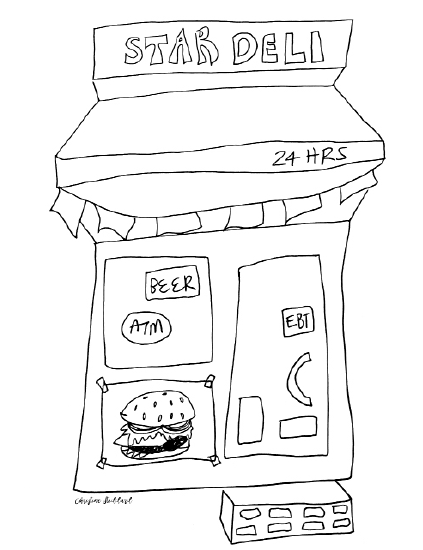
Illustration by Christine Stoddard.
5 a.m., 10 a.m., 2 p.m., 12 a.m., the sight is much the same.
Behold, the faithful shop of city yore,
but still like the old days in this borough.
Not yet transformed by the wave of corporate magicians
and their wands summoning
chain after chain
and franchise after franchise
in Manhattan.
We prefer the grime and grit here.
The Brooklyn bodega welcomes you from
Greenpoint to Bed-Stuy to Sunset Park to Sheepshead Bay,
from Williamsburg to Crown Heights to Canarsie.
Enter the temple of pork rinds, popcorn, and plantain chips.
Row after row of sodas and energy drinks and beers beckon you.
Buy one snack or many and the boring necessities, too:
toilet paper, bleach, sponges, tissues, dish detergent.
Stay clean at any hour, or clean enough.
You don’t owe your landlord sparkles.
Order your lamb over rice,
your pastrami on rye,
your sopping mozzarella sticks.
The wait respects a New Yorker’s pace.
Go, go, go, go, go, go.
The guy grills faster than
the subway during rush hour.
Chop, chop, sizzle—
“Roll or hero?”
“White sauce?” “Hot sauce?”
Time to rush out, stuff your mouth as you bound through the streets.
Say good-bye for now, until back you come. Always come back.
The bodega is a humble place. A familiar place.
A place so entwined with thoughts of home.
By Christine Stoddard | cstoddard@queensledger.com
An actress, filmmaker, Peace Corps alum, and retired engineer shares her oral history.
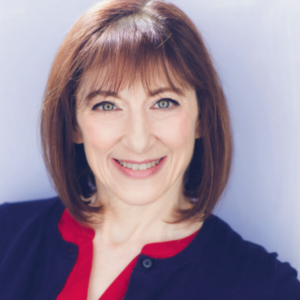
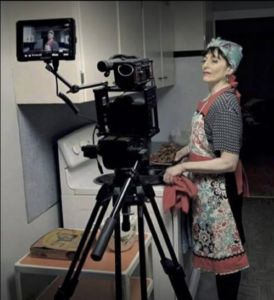
Happy Women’s History Month! The following is an excerpt from an episode of the talk show “Badass Lady-Folk,” featuring guest Meredith Binder. This audio-only conversation was recorded in July 2023. Hosted by Christine Stoddard, the show is now filmed at Manhattan Neighborhood Network since August 2023. “Badass Lady-Folk” originated on Radio Free Brooklyn, where it currently airs on Fridays at 9am.
This transcript has been edited and condensed for print purposes. Transcription support was provided by BQE Media editorial assistant Britney Trachtenberg.
Christine: You’re listening to the Badass Lady-Folk. My name is Christine Stoddard. I’m your host as always, since 2016. Thank you everyone for listening. Today my wonderful guest is Meredith Binder. Hi, Meredith.
Meredith: Hi, Christine. Thanks for having me.
Christine: Yeah! Thanks so much for being on! So, how do I know Meredith? I know Meredith through the world of theatre. We met in a show that I co-produced with Beverly Bonner at the Broadway Comedy Club. Meredith has been in my comedy show “Quail Tails.” She’s done “Cleansing Limpia,” a workshop piece I had at Irondale. There’s probably something I’m forgetting, but yeah, we already worked together a bunch in the past few months that we’ve known each other and it’s been great…or, I guess, half a year at this point. But, I wanted to talk to Meredith on the show not just for, you know, some insight into her acting and filmmaking work, but really to focus on her first career in engineering. So, Meredith, tell me, how did you become a “lady engineer?”
Meredith: Well, it really wasn’t intentional. I was in college and I was taking a physics class, just, you know, a prereq for whatever. The physics instructor was the only woman physics professor. Granted, this is 1979, at that point. She said to me, “You have potential. I’m going to ask my husband who’s an experimentalist to give you a job in his lab.” She was a theorist. [She said], “He hires a small number of undergraduates every year.” So, she arranged this. Then, the next thing you know, I was a physics major and I’m not sure how that happened…if I had to be…but I didn’t have any other ideas [about] what I wanted to do, so I became a physics major. Then, I couldn’t get a job and I didn’t know what to do. I decided to get a Master’s Degree in molecular engineering because I didn’t have any better ideas. So, this was all very…just, sort of…life happened to me because I really didn’t know what I wanted to do.
Christine: Ah! So, what were you doing working in the lab?
Meredith: Oh, as an undergraduate?
Christine: Yeah.
Meredith: I was building a scintillation counter or, at least, parts to be used as a scintillation counter. And then, over summer break—
Christine: I don’t know what that is. What is that?
Meredith: Oh, okay. So, we did our experiments at Brookhaven National Lab on Long Island even though I was at the University of Michigan in Ann Arbor, Michigan. Over a school break, so particularly in the summer, we’d go out there as a research team. So, you have the accelerator. We were doing elementary particle research on protons. The proton comes out of the accelerator and then it goes to the scintillation counter so we can take measurements on it: how fast it’s going, like angles it’s coming out at, and so on. That’s all great information for determining what the guts of a proton was back then. But the professor was trying to defy the quark theory in favor of having some three different central charges that were concentric and that was disproven, so I did not go down in history.
Christine: Ah! Okay. I recognize many of the words that you said from high school. Don’t really understand what you just explained to me, but I’m happy that you tried to break it down. Thank you. [Laughs.]
Meredith: So sorry about that. I usually try to make sure people understand, but I think the gist of that story was that I didn’t get to go down in history.
Christine: Yeah, yeah, no I [laughs] got that much. Well, hey! There’s still time. Maybe not in engineering, but in the arts world.
Meredith: [Laughs.]
Christine: Okay, so, you went for a Master’s in molecular engineering. Was that because of the work in the lab or…? I know you said you didn’t know what you wanted to do, but, I mean, maybe you could’ve become a teacher, right? Or you could have done a Master’s in another kind of engineering?
Meredith: Well…
Christine: Or not really?
Meredith: No, I probably could have, but when I was working at Brookhaven, I saw how isolated we were, you know, physically and socially. People just camped out at this lab and I felt like if I continued in physics, I wouldn’t have any life. You know, I wanted to live in an urban area and, you know, raise kids and have access to the arts and that just didn’t seem like the life to me. So, I was looking for something else, but, you know, along the way, I graduated, and I couldn’t get the job. I don’t think there’s that kind of prejudice anymore. I think you can get an engineering job with a physics degree now, but you couldn’t back then. And so, having, you know, a great senior thesis project and, you know, high GPA and all that…That didn’t matter. It would have been better to have neither of those and have the engineering degree. So, I was like, “Well, it will take less time to get a Master’s than another Bachelor’s. So, I will…do that.”
Christine: Yeah, so, do you think that the intention at that time with the physics undergrad was then to go for a PhD program in physics or something else? Like, not for you, but why…Do you have any idea why that program would have been designed?
Meredith: Oh, the undergraduate program I was in?
Christine: Mhm. Yes.
Meredith: Michigan, at the time, was the third-top physics school in the country and the undergraduate program was very small. And so, we took classes… Starting junior year, all our classes were combined with the graduate students. So, I don’t know if the undergraduate program had any raison d’etre other than to provide a physics degree in a very large state university. But, the graduate program was definitely geared toward academics and we had people from all over the world in the program. It was bigger than the undergraduate program.
That’s the end of the excerpt! Listen to the full episode here:
More at BadassLadyFolk.com.
By Christine Stoddard | cstoddard@queensledger.com
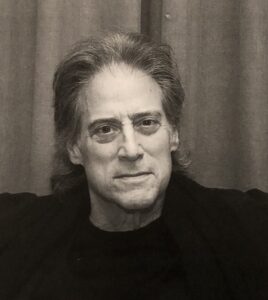
Richard Lewis
Less than a month after the premiere of “Curb Your Enthusiasm” Season 12, comedian Richard Lewis passed away. On the show, he plays Larry David’s best friend, but that was no fiction: The two grew up together in New York City’s comedy scene and were lifelong friends. They were even born in the same hospital—the now-defunct Brooklyn Jewish Hospital and Medical Center of Crown Heights—in 1947. Though Lewis was raised in Englewood, NJ, he brought a Brooklynite’s sensibilities to his stand-up and acting. I was recently reminded of his role as Prince John in my childhood favorite Men in Tights (1993):
Prince John: Such an unusual name, “Latrine.” How did your family come by it?
Latrine: We changed it in the 9th century.
Prince John: You mean you changed it TO “Latrine”?
Latrine: Yeah. Used to be “Sh*thouse.”
Prince John: It’s a good change. That’s a good change.
May his memory be a blessing.
New Bushwick Foodtown
There’s a big, beautiful Foodtown in Bushwick and I’ve got the photos to prove it. The supermarket, located at 54 A Noll St., boasts bright lighting, the air of cleanliness, and a wealth of prepared food, including a hot food bar. This was my neighborhood for a year not too long ago and, let me tell you, this Foodtown would’ve been convenient then. My only complaint was that there were only three egg bagels on Friday at 5 p.m., but I guess you snooze, you lose.
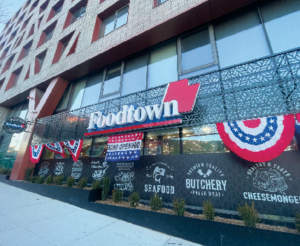
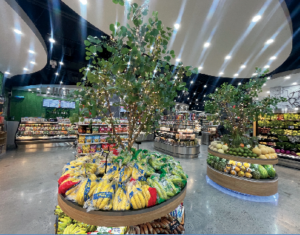
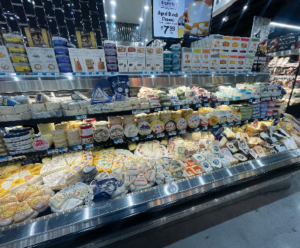
Gowanus Migrant Shelter
In my reporting for this column and stories you may have seen already and more to come, I have been outside of the migrant shelters at 47 Hall St. in Clinton Hill and Floyd Bennett Field in Marine Park. I also visited the outside of the illegally run migrant “fauxtel”—that’s “faux hotel,” in case you didn’t get it—at Sarr’s Wholesale Furniture in Richmond Hill. In the past couple of weeks, I’ve bought candy from the same little Ecuadorian girl on the subway. I last saw her selling candy last Saturday, when an 8-year-old should be playing or doing homework. She was so young that making change from a $20 was a task because she is still learning arithmetic. (I felt bad and won’t try such a large bill next time; it was all I had at the time and I wanted to help.) The desperation that asylum seekers feel to flee their countries and start over, especially in the toughest city on the planet, brings tears to my eyes.
The migrant shelter I’m adding to my list for reporting purposes will open in Gowanus. While there has been pushback, including at a town hall meeting that took place on March 4, the city has already hired Bhrags Home Care Corporation. Due to open at 3rd St. and Bond St., the former brewery is slated to accommodate 400 migrant men. The Third Street Block Association has filed a lawsuit against the shelter due to concerns over the number of people and local environmental conditions. According to the Environmental Protection Agency, the Gowanus Canal is not only “heavily contaminated” but considered a national priority for cleanup. Let’s see what happens.
By Christine Stoddard | cstoddard@queensledger.com
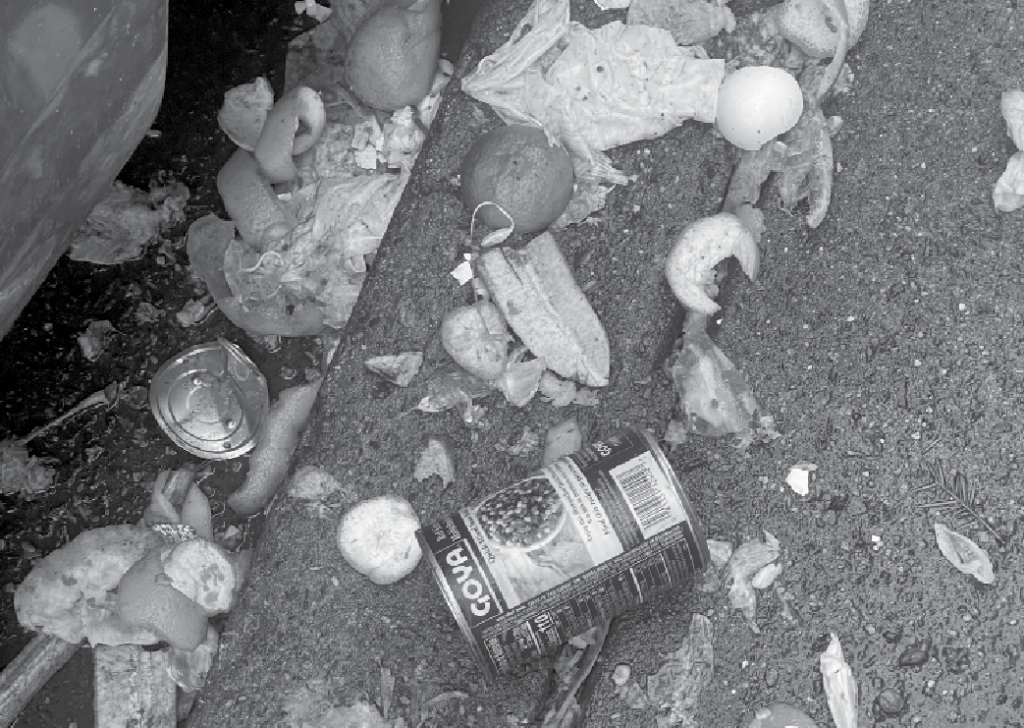
Seen on the sidewalk near the Bedford-Nostrand G train stop. Curbside Composting service is currently available to all Brooklyn and Queens residents. Curbside Composting service is year-round, and every week on your recycling day. Send your photos of neighborhood eyesores to news@queensledger.com.